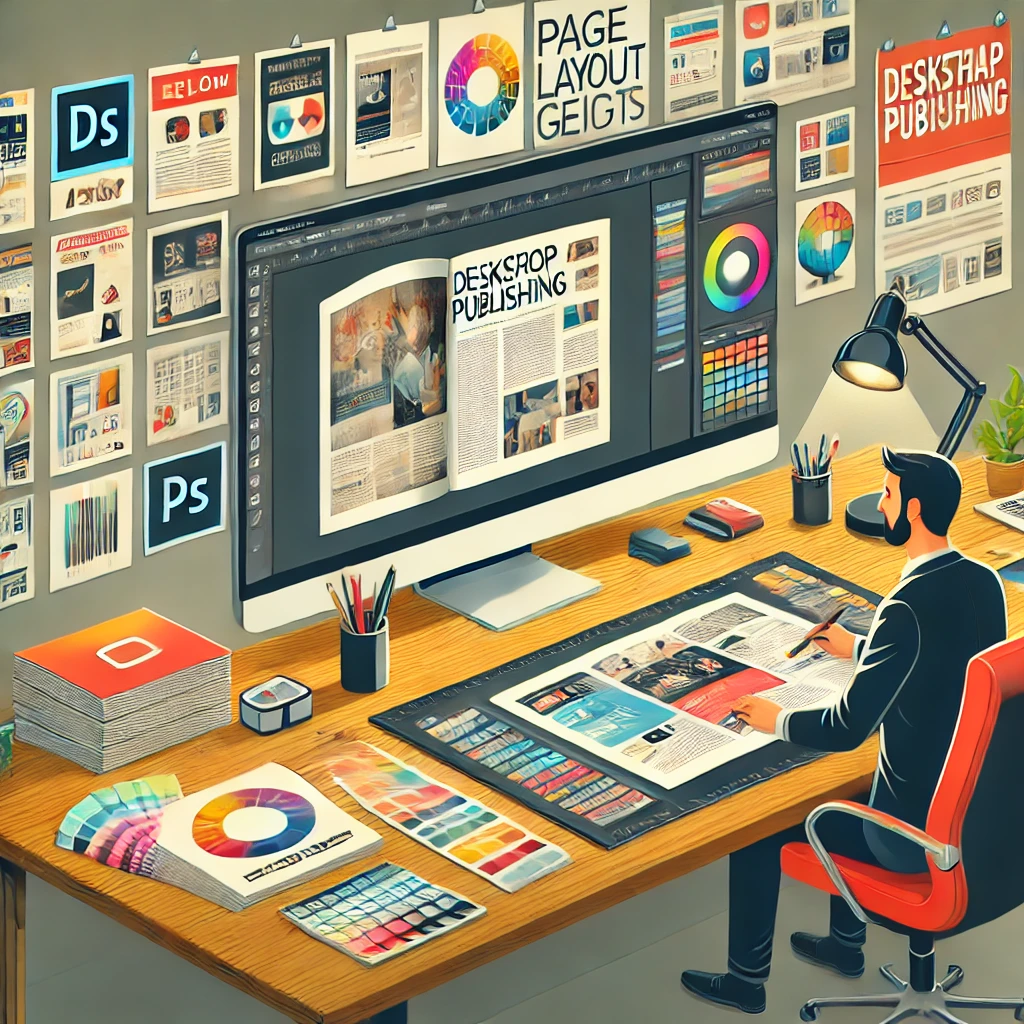Desktop Publishing (DTP) is often overlooked, yet it’s an indispensable marketing tool. While digital marketing is prevalent, DTP remains crucial, especially for reaching customers in markets like China. Effective design, text, and layout are essential for impactful publications, whether printed or digital, across all industries.
What is DTP and tools to use?

DTP is the process of creating high-quality printed materials using professional software like InDesign, FrameMaker, QuarkXPress, and Photoshop. It ensures well-structured reports, advertisements, magazines, and brochures while maintaining design consistency across different languages.
Why MS Word is NOT a DTP Tool?
❌ Unstable – Crashes with large files.
❌ Poor text & image alignment – Elements shift unpredictably.
❌ Time-consuming adjustments – Layout issues require constant fixes.
Why Use Professional DTP Software?
✅ Stable & Reliable – Handles large documents effortlessly.
✅ Precise Layout Control – Keeps text and images in place.
✅ Template Support – Simplifies design for catalogs, brochures & magazines.
For accurate localization & seamless formatting, premium DTP tools ensure efficiency, consistency, and a polished final product. 🚀
What are the benefits of DTP for your business?
DTP (Desktop Publishing) is more than just fixing layouts—it optimizes the entire content creation cycle, making translation, design, and updates more efficient and cost-effective.
1️⃣ Faster Workflow & Reduced Lead Time
✅ Pre-designed templates speed up layout and design
✅ DTP specialists plan ahead, minimizing delays and errors
✅ Seamless integration with translation tools for quick localization
2️⃣ Brand Consistency & Lower Maintenance Costs
🔹 Consistent design across all versions of a product
🔹 Easily export editable translation-ready files
🔹 Quick updates for new versions without starting from scratch
📌 Example:
A 300-page catalog (500MB InDesign file) can be exported into a 5MB .idml translation file, making it easier to process in CAT tools. After translation, DTP specialists re-import the content into the original layout, saving time and costs on manual adjustments.
3️⃣ Maximizing Efficiency with CAT Tools & Centralized Updates
📍 CAT (Computer-Assisted Translation) tools improve accuracy & consistency
📍 Translation Memory (TM) reuse reduces costs & speeds up localization
📍 Easy image replacement via centralized folders keeps documents up-to-date
5 Best Practices on Chinese DTP (Desktop Publishing)
1️⃣ Use Professional DTP Applications
✅ MS PowerPoint – Use system fonts for presentations to prevent display issues.
✅ Adobe InDesign, QuarkXPress, FrameMaker, PageMaker – Essential for complex projects like brochures, technical guides, and datasheets.
📌 Why? Chinese characters may not render properly in older DTP tools, causing readability issues.
2️⃣ Choosing the Right Font for Chinese Content
🔹 Safe fonts exist but may appear unattractive.
🔹 Arial Unicode MS can make some characters larger than others, ruining the layout.
🔹 Elegant Chinese calligraphy & handwriting fonts work well for luxury brochures & catalogs.
📌 Tip: Poor font choices can make documents look unprofessional, reducing trust in your brand.
3️⃣ Avoid “Orphans” & “Widow” Lines
🛑 Orphans: Single words or lines dangling at the bottom of a paragraph.
🛑 Widows: A single line from a paragraph left at the top of a new column or page.
📌 Why it matters:
🔹 Chinese readers dislike uneven formatting.
🔹 Fix: Adjust kerning (spacing between characters) to eliminate these issues.
4️⃣ Indexing Differences: Simplified vs. Traditional Chinese
📖 English manuals: Indexed alphabetically.
📖 Simplified Chinese manuals: Arranged by Pinyin (Romanized spelling).
📖 Traditional Chinese manuals: Ordered by stroke count.
📌 Tip: Knowing this distinction ensures the manual remains user-friendly for Chinese audiences.
5️⃣ Maintain Proper Alignment for Readability
✔️ Justify paragraphs for a clean, consistent look.
✔️ English-to-Chinese text expansion – Chinese translations are more compact, but require proper spacing adjustments.
📌 Example:
🔹 1,000 English words → 1,700 Chinese characters
🔹 Chinese characters take less space horizontally, so adjust margins to maintain balance.
READ MORE >>> What is the Role of Localization in Translation Services
Feel free to contact our team!
